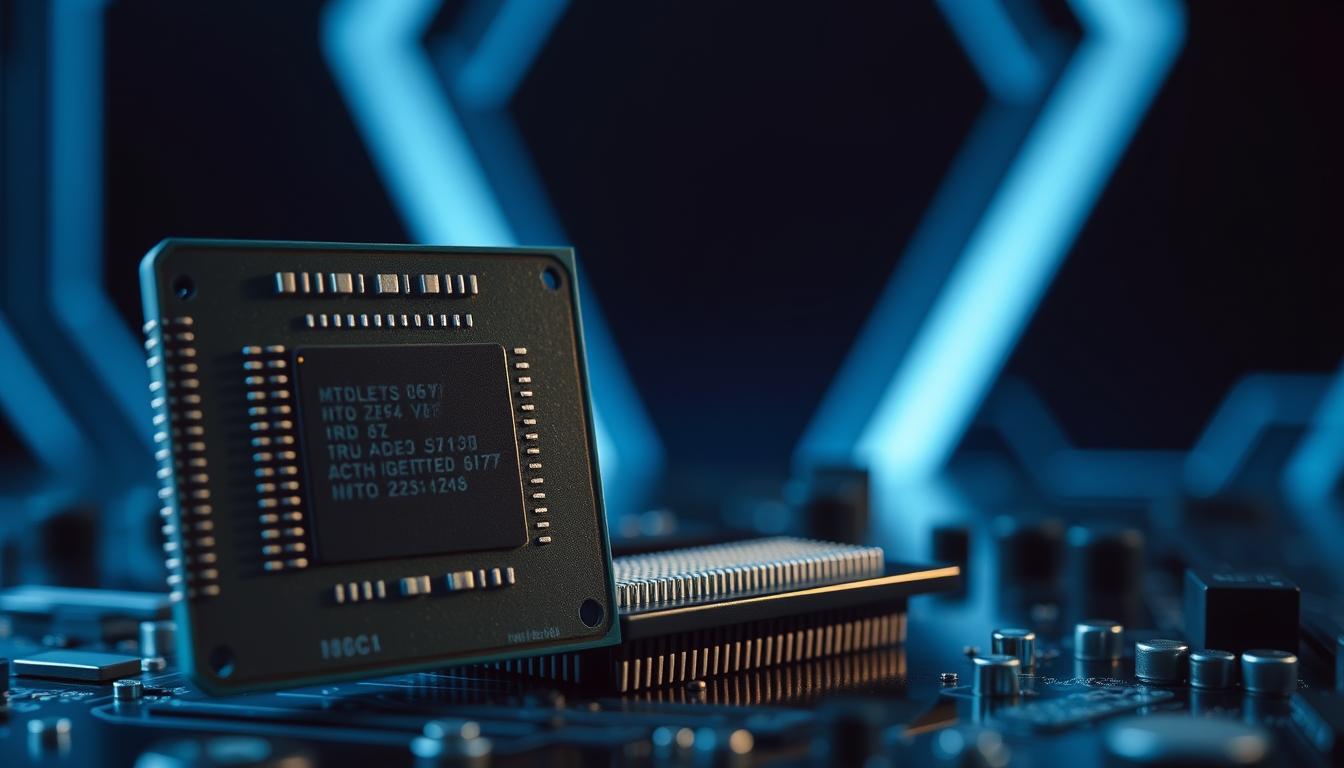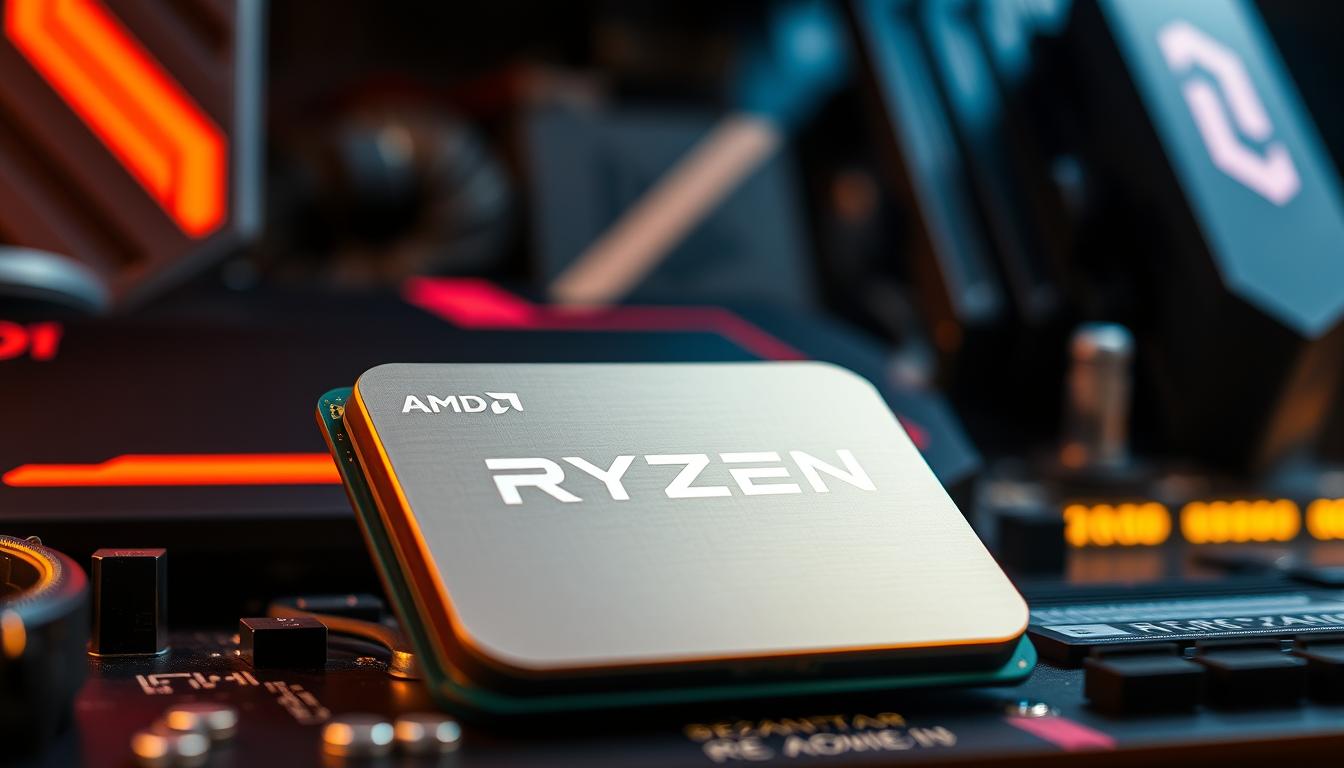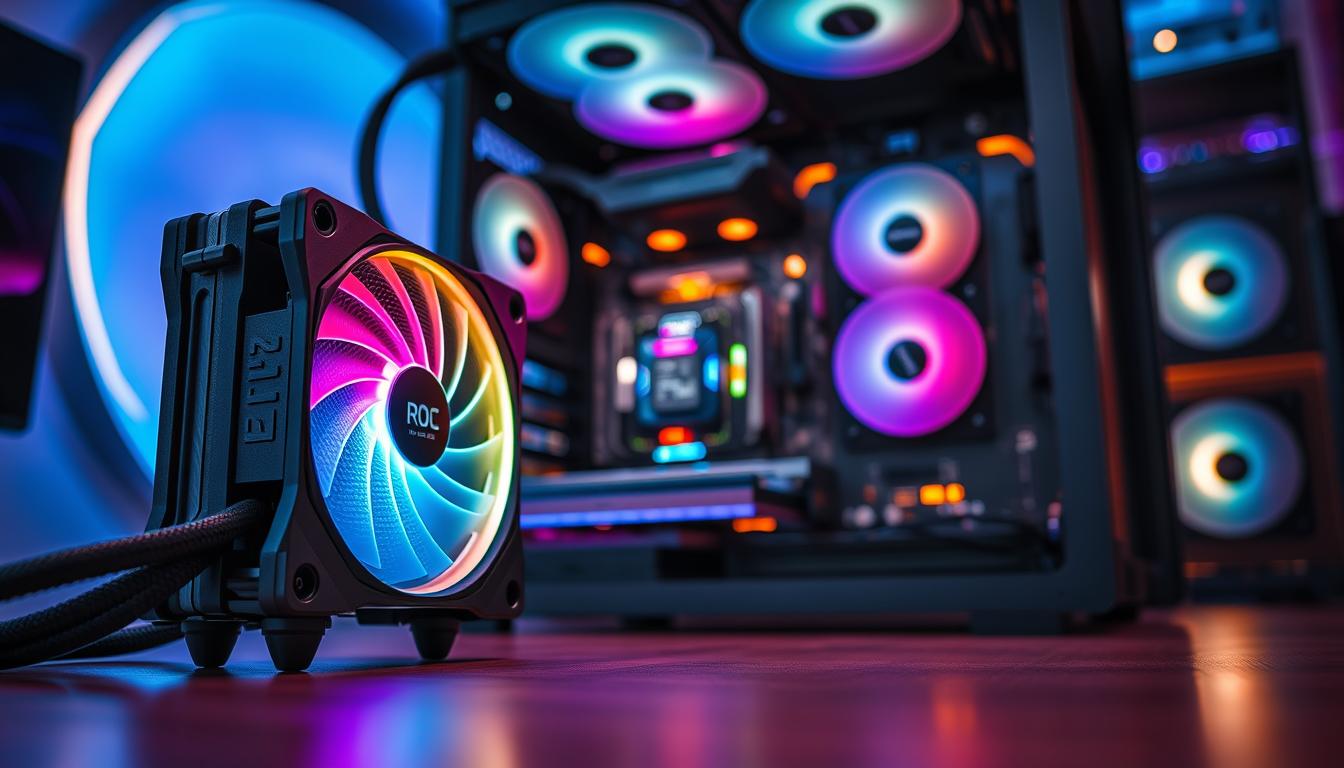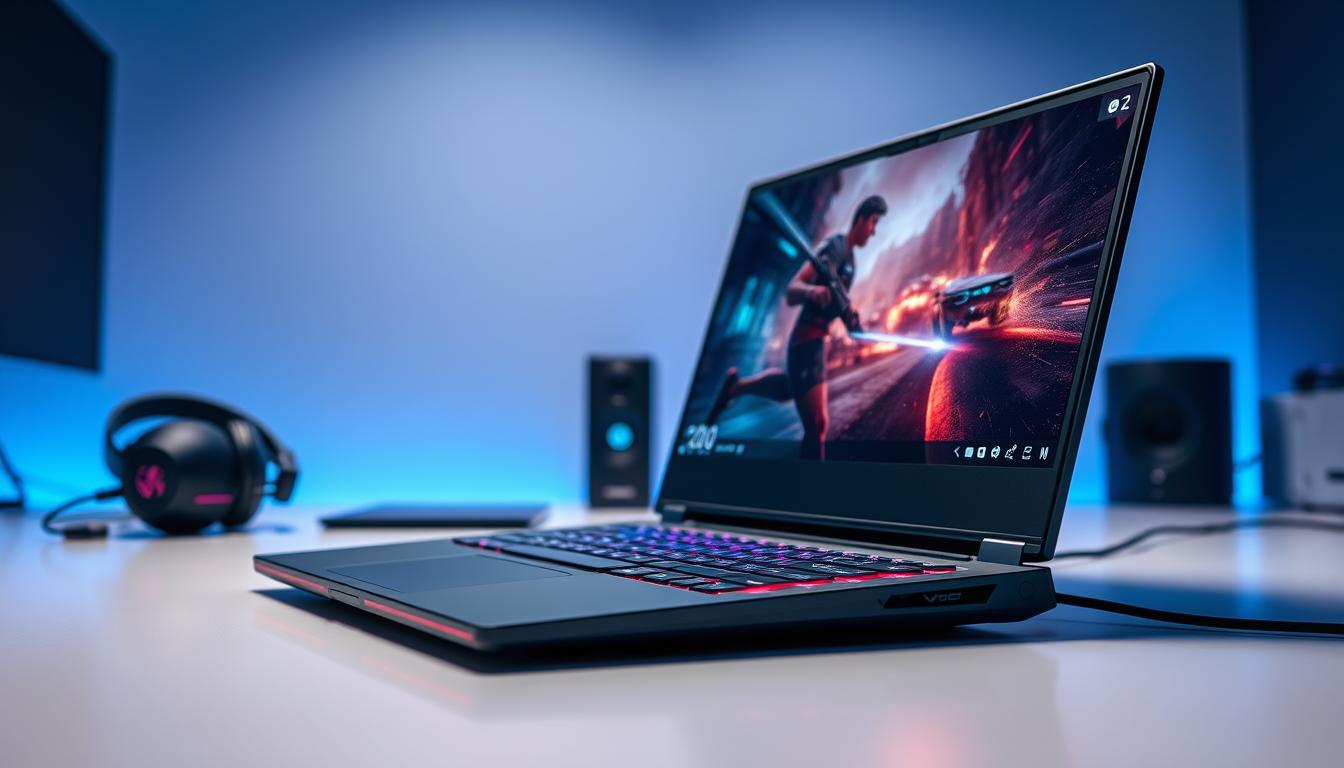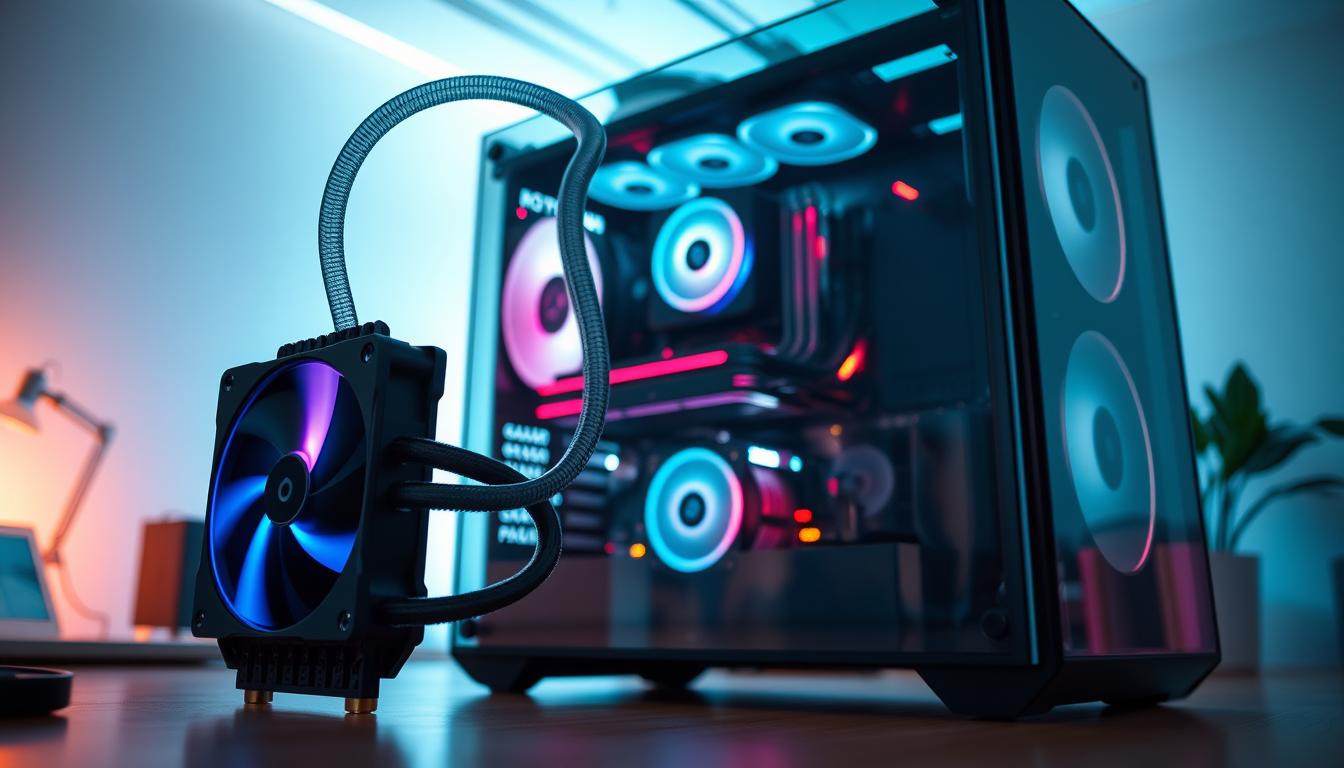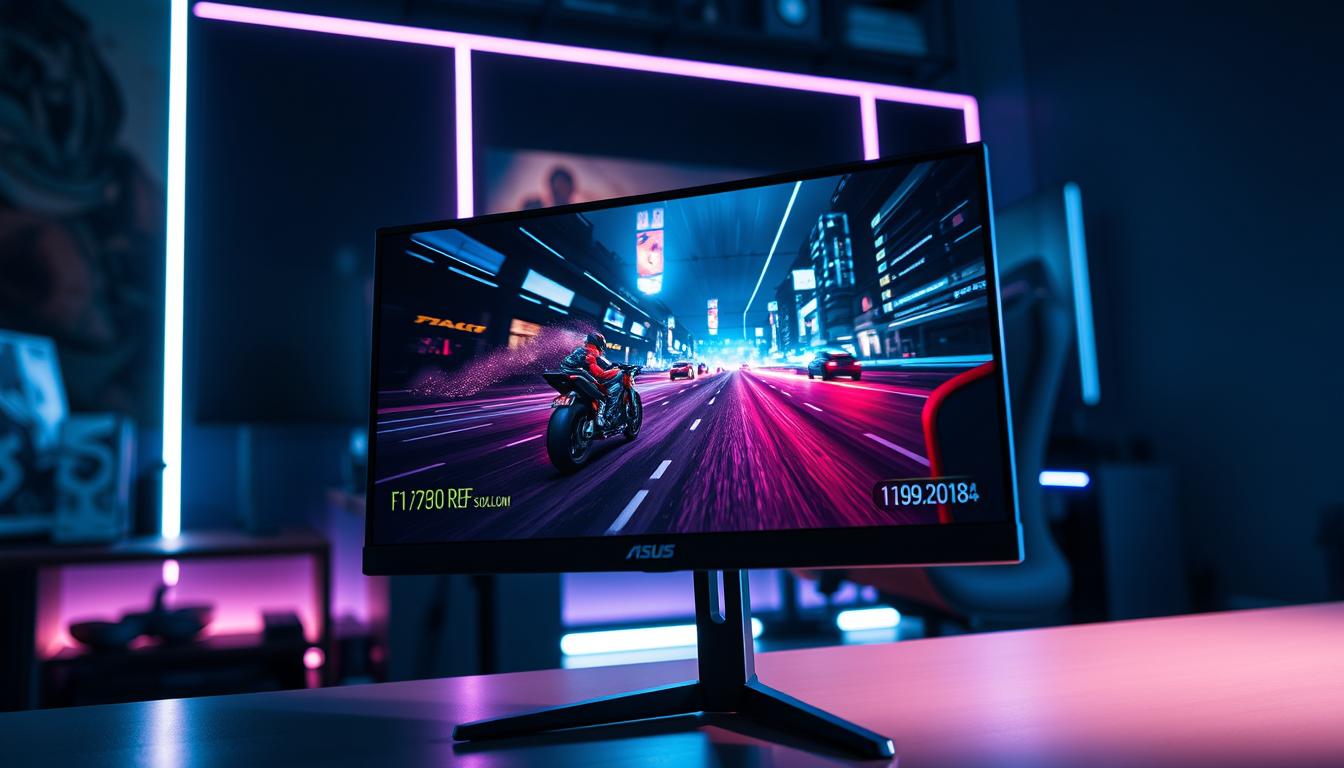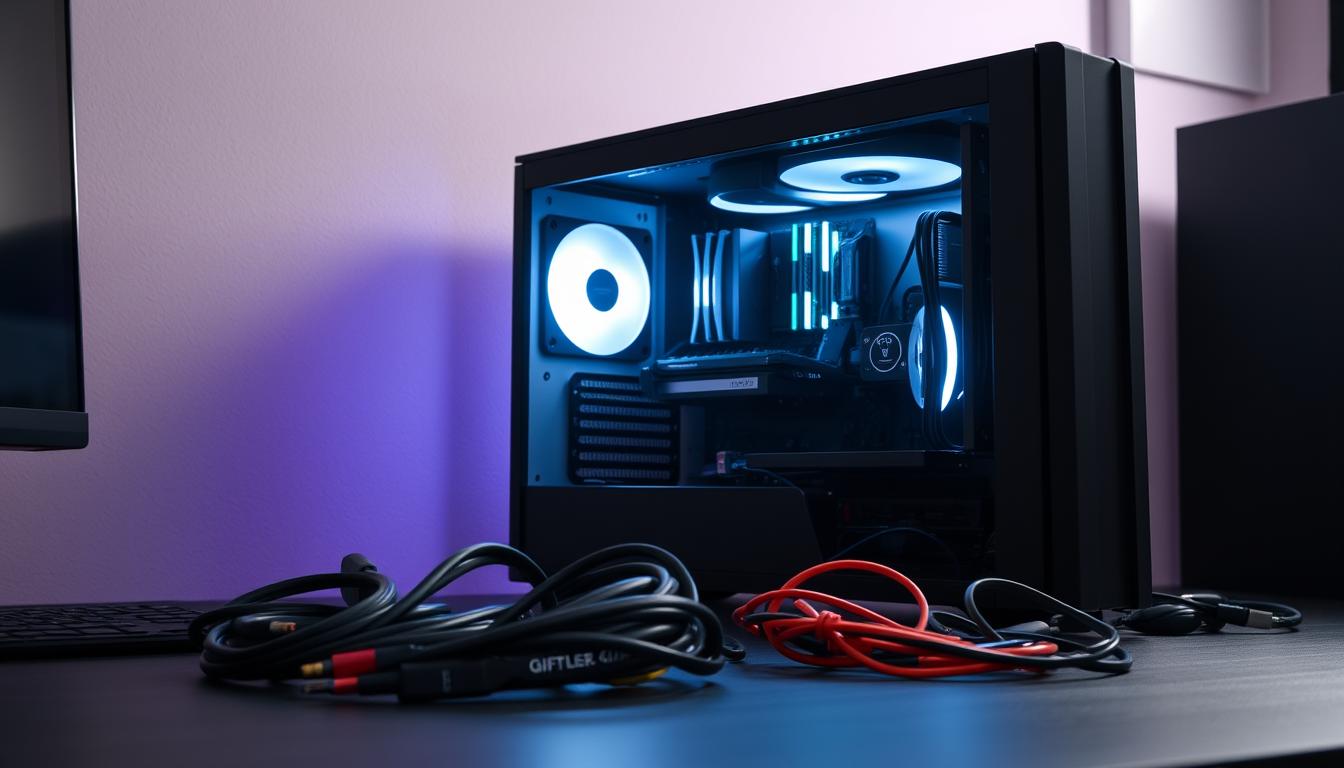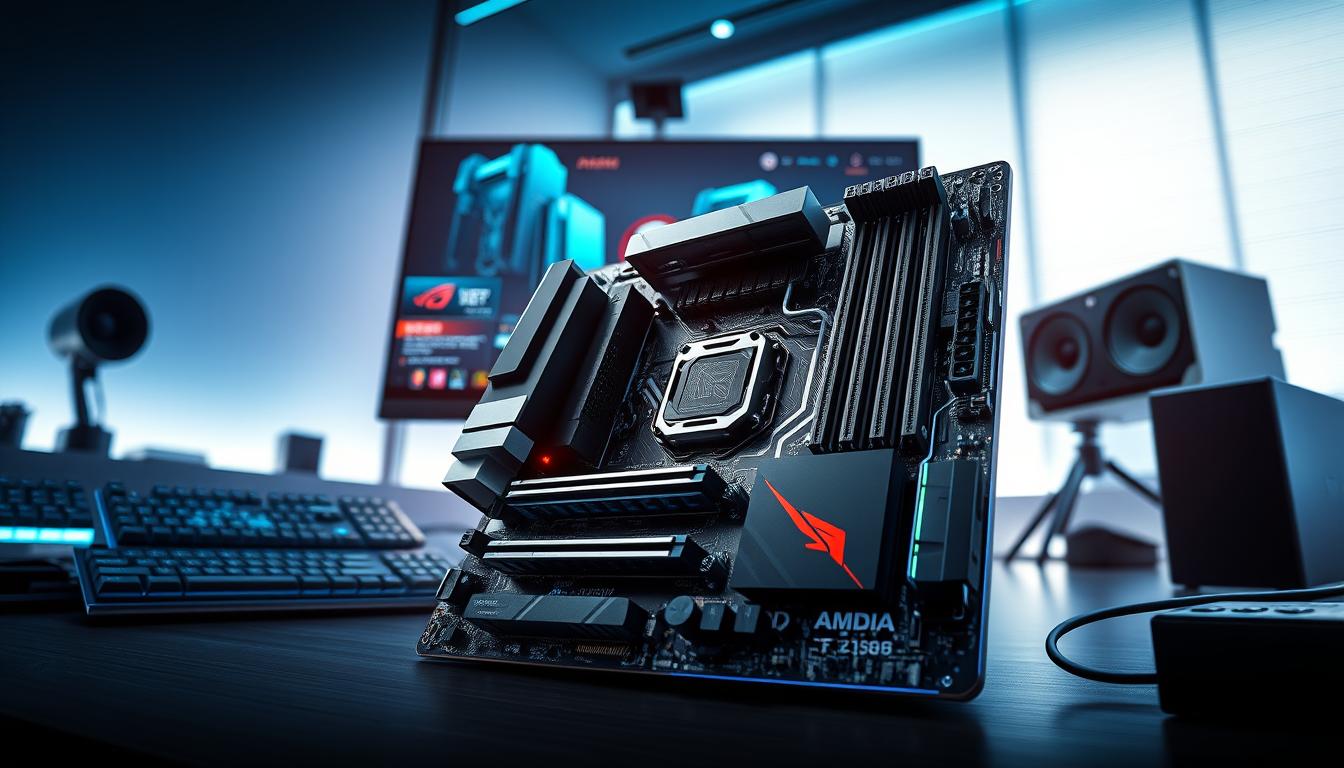Did you know that voltage fluctuations caused by an unreliable power supply can reduce your system’s performance by up to 30%1? This startling fact highlights the critical role a robust power supply unit plays in maintaining system stability and longevity. For gaming setups, where components like GPUs and CPUs demand consistent energy, choosing the right PSU is non-negotiable.
Modern power supplies are rated on the 80 Plus efficiency scale, with Titanium being the highest standard. Models like the EVGA Supernova 1000 P3 and Corsair AXi Series AX1600i boast this certification, ensuring minimal energy waste and lower electricity bills2. Additionally, features like modular designs and advanced protections, such as over-voltage and over-power safeguards, make these units indispensable for high-performance systems1.
This article dives into a comparative analysis of top-rated power supplies, focusing on wattage, efficiency, and real-world performance. Whether you’re building a budget-friendly rig or a high-end gaming powerhouse, this guide provides the technical clarity needed to make an informed decision. Learn more about PSU specifications and find the perfect match for your setup.
Understanding the Role of a Power Supply in Gaming PCs
Gaming PCs demand more than just raw power; they require a stable energy source to thrive. The PSU is the unsung hero, converting AC power from the outlet into DC power for all components. Without it, even the most advanced rigs can falter.
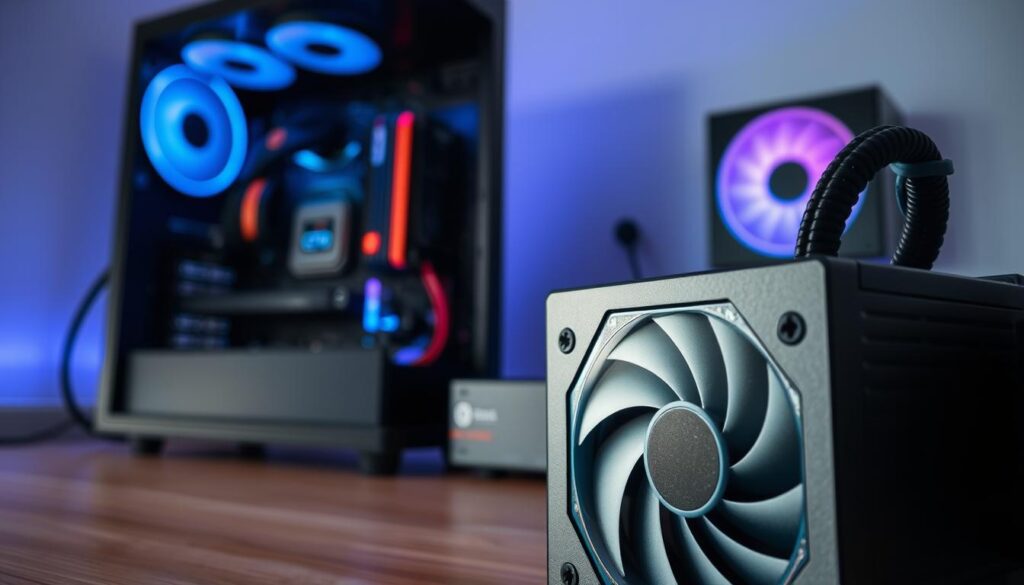
Importance of Stability and Longevity
A high-quality PSU ensures consistent voltage delivery, preventing system crashes and extending component lifespan. Power fluctuations can damage sensitive parts like the CPU and GPU, leading to costly repairs3. Stability is crucial for uninterrupted gaming sessions and long-term system health.
Protective Features and Component Safety
Modern PSUs come equipped with advanced safety mechanisms. Features like Over Voltage Protection (OVP) and Short Circuit Protection (SCP) safeguard against electrical irregularities. For example, the MSI MAG A550BN includes these protections, ensuring reliable operation under varying loads4.
High-quality components within the PSU also contribute to sustained performance. These include durable capacitors and efficient cooling systems, which reduce heat and noise5. Such features are essential for maintaining optimal conditions during intense gaming sessions.
| Protection Feature | Function | Example |
|---|---|---|
| Over Voltage Protection (OVP) | Prevents excessive voltage from damaging components | MSI MAG A550BN |
| Short Circuit Protection (SCP) | Shuts down the PSU in case of a short circuit | Corsair RM850x |
| Over Current Protection (OCP) | Limits current to prevent overheating | EVGA Supernova 750 G6 |
For more insights on how a PSU protects your hardware, check out this detailed guide. Additionally, explore the benefits of modular designs in this high-performance PSU review.
Key Features to Consider in a Gaming PC Power Supply
Efficiency and design are critical factors in choosing a reliable energy source for your setup. A high-quality unit ensures stable performance and longevity, especially for demanding systems. Two key aspects to evaluate are efficiency certifications and modularity.
Efficiency Certifications and Performance
Efficiency certifications, such as the 80 PLUS ratings, indicate how effectively a unit converts AC power to DC. Higher ratings like Gold, Platinum, and Titanium ensure minimal energy waste, reducing electricity costs and heat output6. For example, a Titanium-certified unit operates at 90% efficiency even at 20% load, making it ideal for systems with fluctuating demands7.
Real-world testing shows that a Gold-certified unit can save up to 10% on energy costs compared to Bronze models8. This makes it a cost-effective choice for long-term use. Additionally, higher efficiency ratings often correlate with better build quality and reliability.
Modularity and Cable Management
Modular designs allow users to connect only the cables they need, improving airflow and reducing clutter. This is particularly beneficial for compact builds or systems with limited space. For instance, fully modular units like the Corsair RM850x offer flexibility and ease of installation7.
Effective cable management not only enhances aesthetics but also improves thermal performance. By reducing obstructions, modular units help maintain lower temperatures, ensuring consistent operation during intense gaming sessions6.
When selecting a unit, consider both efficiency and modularity to optimize performance and maintain a clean, organized build. These features are essential for creating a reliable and efficient system.
How to Choose the Best Power Supply for PC Gaming
Selecting the right PSU for your setup involves more than just wattage calculations. A reliable supply unit ensures stability, efficiency, and longevity for your system. To make an informed decision, consider factors like load capacity, efficiency ratings, and future-proofing your build9.
One common mistake is overestimating wattage based solely on TDP (Thermal Design Power). While TDP provides a baseline, it doesn’t account for peak loads or additional components. For example, a typical gaming system should not demand more than 100 watts from the PSU’s maximum rated wattage threshold5.
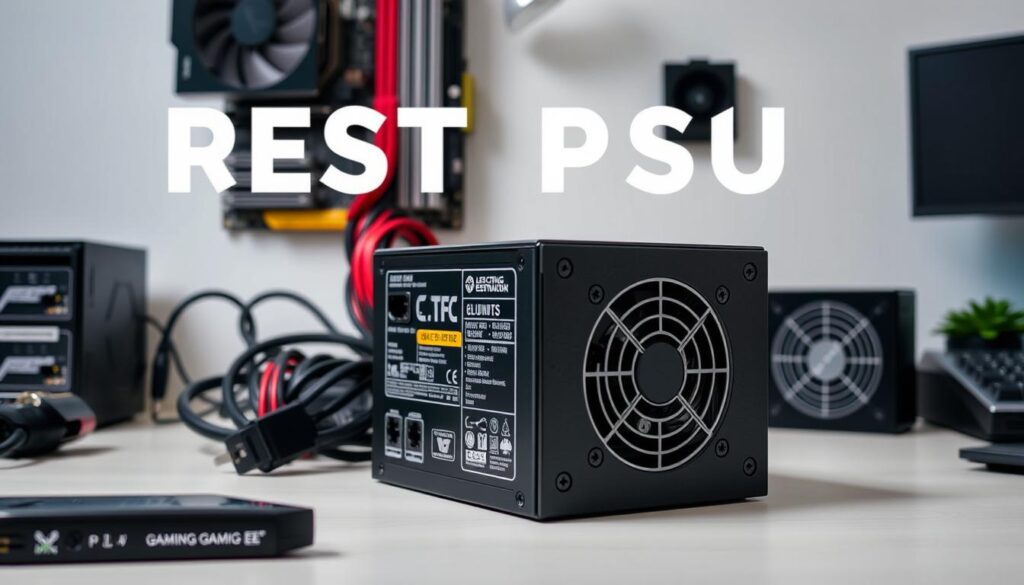
Matching the PSU’s load capacity with your system’s requirements is crucial. Most gaming pcs utilize PSUs ranging from 450W to 1600W, depending on hardware demands5. Adding 150W for peripherals and another 150W for future upgrades ensures your system remains stable and scalable9.
Specific configurations, such as high-end GPUs, significantly impact wattage selection. The newest GPUs require dedicated connections of up to 600W, emphasizing the need for sufficient wattage5. Balancing performance with energy efficiency is also essential. Higher efficiency ratings, like Gold or Platinum, reduce energy waste and heat generation9.
Practical tools like PSU calculators simplify the selection process. These tools factor in all components, ensuring accurate wattage estimates. For instance, a Gold-rated PSU can save up to 10% on energy costs compared to Bronze models5.
| Factor | Consideration | Example |
|---|---|---|
| Wattage | Match system requirements with headroom for upgrades | 650W for mid-range builds |
| Efficiency | Higher ratings reduce energy waste and heat | Gold or Platinum-rated PSUs |
| Load Capacity | Ensure PSU can handle peak loads | 100W below maximum threshold |
By understanding these factors, you can choose a PSU that meets your system’s needs while ensuring long-term reliability and efficiency. For more detailed guidance, consult expert reviews and PSU calculators to make the best choice for your setup.
Analyzing Wattage and System Requirements
Accurately determining your system’s wattage needs is a critical step in building a reliable and efficient setup. A PSU that meets your hardware’s demands ensures stability and longevity, while inadequate wattage can lead to crashes and component damage10.

Calculating Your Gaming PC’s Needs
To calculate total power consumption, start by adding the wattage requirements of your CPU, GPU, and other components. For example, an Intel i9 processor paired with an RTX 4090 typically requires a 1000W unit11. Modern GPUs can experience power spikes up to 1.5 to 2 times their rated TDP, so it’s essential to account for these fluctuations10.
Adding a 20-30% buffer to your total wattage calculation ensures your system can handle peak loads and future upgrades10. This approach not only enhances reliability but also provides headroom for overclocking and additional peripherals.
Planning for Future Upgrades
When selecting a PSU, consider your future hardware plans. Higher-wattage units like the ROG Thor 1600W Titanium offer scalability for demanding components11. This ensures your system remains stable even as you upgrade to more powerful CPUs or GPUs.
Quality is another critical factor. Premium units with 80 Plus Gold or higher certifications deliver consistent performance and energy efficiency11. Investing in a high-quality PSU not only protects your components but also reduces long-term energy costs.
By carefully analyzing your system’s wattage needs and planning for future upgrades, you can build a setup that combines reliability, efficiency, and scalability. This approach ensures your gaming rig performs optimally, even under the most demanding conditions.
Comparing Top-Rated Power Supplies on the Market
When building or upgrading a system, selecting the right energy source is crucial for stability and performance. This section compares budget-friendly and high-end options, focusing on wattage, manufacturer reputation, and noise levels.
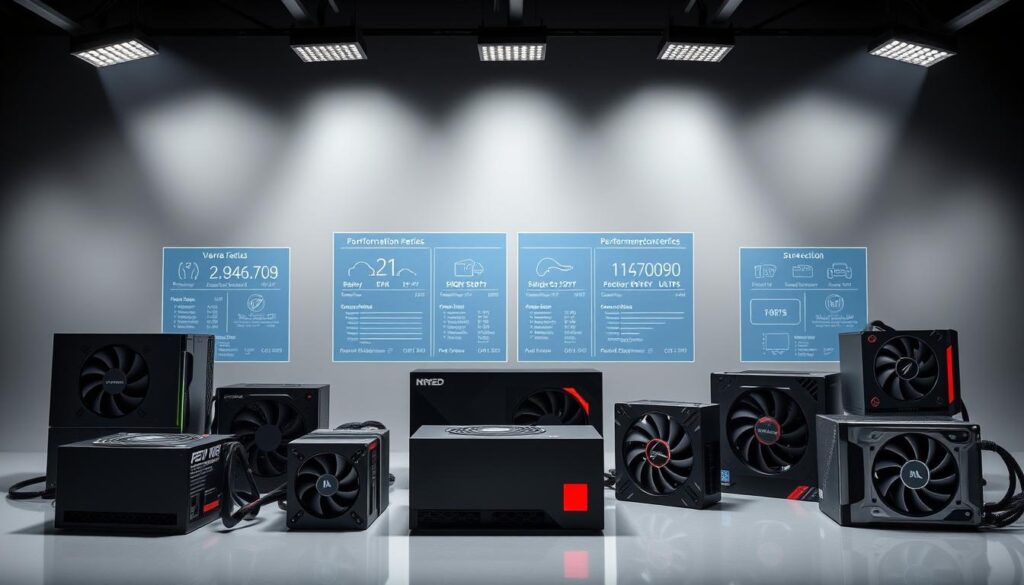
Budget-Friendly Options Under 650 Watts
For those on a budget, several units offer excellent value without compromising quality. The EVGA Supernova 550 GM, with its 550W capacity and ECO Mode, ensures silent operation even under moderate loads12. Its compact SFX form factor makes it ideal for smaller builds, while the 7-year warranty provides peace of mind12.
Another standout is the Thermaltake Smart 700W, which features a single +12V rail design and 80 PLUS White certification12. While its bulkier design may not suit all cases, it delivers reliable performance for mid-range systems12.
High-End Choices for Maximum Performance
For high-performance systems, the Corsair AX1600i stands out with its 1600W continuous power and 80 PLUS Titanium efficiency12. Advanced GaN MODFET technology ensures superior efficiency, while the 140mm fan maintains stable temperatures even under heavy loads12.
The ASUS ROG Thor 1000W Platinum II combines 80 PLUS Platinum efficiency with customizable OLED displays and RGB lighting12. This unit is perfect for enthusiasts seeking both performance and aesthetics12.
| Model | Wattage | Efficiency | Key Feature |
|---|---|---|---|
| EVGA Supernova 550 GM | 550W | 80 PLUS Gold | Compact SFX form factor |
| Thermaltake Smart 700W | 700W | 80 PLUS White | Single +12V rail design |
| Corsair AX1600i | 1600W | 80 PLUS Titanium | GaN MODFET technology |
| ASUS ROG Thor 1000W Platinum II | 1000W | 80 PLUS Platinum | Customizable OLED displays |
When choosing a unit, consider factors like wattage, efficiency, and noise levels. For more insights on high-performance options, check out this detailed review.
Energy Efficiency and Thermal Performance
Energy efficiency and thermal performance are critical factors in maintaining a stable and reliable system. A well-designed unit ensures minimal energy loss and optimal heat management, which directly impacts longevity and performance13.

Understanding 80 Plus Certifications
The 80 Plus certification is a widely recognized standard for energy efficiency. Units with this rating guarantee at least 80% efficiency at various load levels, reducing energy waste and lowering electricity costs13. Higher certifications like Gold, Platinum, and Titanium offer even greater efficiency, with Titanium-rated units achieving 90% efficiency at 20% load13.
For example, the ROG Strix Platinum PSU Series features 80 PLUS Platinum certification, ensuring high efficiency and stable power delivery13. This makes it an excellent choice for demanding setups.
Managing Heat and Minimizing Noise
Effective heat management is essential for maintaining system stability. High-quality units use advanced cooling systems, such as large fans or hybrid modes, to dissipate heat efficiently13. For instance, semi-passive designs reduce noise by operating the fan only under heavy loads, ensuring quiet operation during normal use13.
Noise reduction technologies, like Zero-Fan modes, further enhance user experience by eliminating fan noise during low to moderate loads13. This is particularly beneficial for users who prioritize a quiet environment.
“A well-designed PSU not only ensures energy efficiency but also maintains optimal thermal performance, extending the lifespan of your hardware.”
| Certification | Efficiency at 20% Load | Efficiency at 50% Load | Efficiency at 100% Load |
|---|---|---|---|
| 80 PLUS Bronze | 82% | 85% | 82% |
| 80 PLUS Gold | 87% | 90% | 87% |
| 80 PLUS Titanium | 90% | 92% | 89% |
By understanding these factors, users can make informed decisions when selecting a unit. For a comprehensive guide on evaluating efficiency, refer to expert reviews and technical specifications13.
ATX 3.0 and ATX 3.1: What Gamers Need to Know
The transition from ATX 3.0 to ATX 3.1 marks a significant evolution in connector standards and energy efficiency. These updates address critical issues like transient power spikes and physical compatibility, ensuring smoother operation for high-performance systems14.
Connector Standards and Physical Considerations
ATX 3.1 introduces the new 12V-2×6 connector design, which enhances safety and reduces the risk of overheating14. This connector is backward compatible with ATX 3.0, making it easier for users to upgrade their systems without replacing existing hardware15.
Physical compatibility is also improved, with ATX 3.1 ensuring better alignment and secure connections. This reduces the likelihood of loose connectors, which can lead to system instability14.
Benefits of ATX 3.1 for Gamers
One of the standout features of ATX 3.1 is its tolerance for transient power spikes. Unlike ATX 3.0, which often required oversized units to handle these spikes, ATX 3.1 allows for more efficient power delivery14. This reduces the need for excessive wattage, saving both energy and costs15.
Heat reduction is another key benefit. The improved connector design and modularity of ATX 3.1 units ensure better airflow and lower operating temperatures16. This is particularly beneficial for gaming setups that run for extended periods.
“The new 12V-2×6 connector design in ATX 3.1 not only enhances safety but also improves overall system stability, making it a must-have for enthusiasts planning to upgrade in the coming year.”
| Feature | ATX 3.0 | ATX 3.1 |
|---|---|---|
| Connector Design | 12VHPWR | 12V-2×6 |
| Transient Power Spike Tolerance | Up to 3x sustained power | Up to 200% sustained power |
| Heat Reduction | Moderate | Significant |
| Physical Compatibility | Standard | Enhanced |
For gamers planning an upgrade, ATX 3.1 offers a future-proof solution with improved safety and efficiency. Its advanced features ensure compatibility with next-generation hardware, making it a smart investment for the coming year16.
Testing and Quality Assurance of PSUs
Ensuring the reliability of a PSU involves rigorous testing and quality assurance processes. These procedures are essential to verify performance, stability, and longevity under various conditions. Without thorough testing, even a high-wattage unit may fail to deliver consistent results in real-world scenarios17.
Rigorous Performance Testing Methods
Laboratory testing of PSUs employs advanced tools like programmable DC loads and digital oscilloscopes. For example, the Chroma 6530 AC Source simulates power-line disturbances, while the Yokogawa WT210 power analyzer measures electrical characteristics18. These tools ensure that the unit can handle transient power spikes and maintain stable output under heavy loads19.
Reproducible and standardized methods are critical for accurate results. Testing at ambient temperatures of 45°C (113°F) ensures the unit performs reliably in high-demand environments18. This level of scrutiny guarantees that the product meets industry standards and user expectations.
Interpreting Voltage and Ripple Data
Voltage and ripple measurements are key indicators of a PSU’s performance. Tools like the Picoscope 3424 oscilloscope capture ripple data, ensuring that power delivery remains within acceptable limits18. Excessive ripple can lead to system instability, making this metric crucial for quality assurance.
For instance, the ATX specification allows a maximum ripple of 120mV on the +12V rail. Units exceeding this threshold may require further evaluation or redesign18. By interpreting this data, manufacturers can identify and address potential issues before the product reaches the market.
“Accurate testing and data interpretation are the cornerstones of PSU reliability, ensuring that every unit meets the demands of modern systems.”
| Testing Tool | Function | Example |
|---|---|---|
| Chroma 6530 AC Source | Simulates power-line disturbances | Up to 3 kW of power |
| Yokogawa WT210 | Measures electrical characteristics | Primary power analyzer |
| Picoscope 3424 | Captures ripple data | Ripple and transient-response measurements |
For those on a budget, reliable PSU testers are available for under $50, offering a cost-effective solution for basic performance checks17. However, professional testing remains the gold standard for ensuring long-term reliability. Learn more about PSU testing methods in this detailed guide.
Quality assurance not only enhances performance but also extends the lifespan of your hardware. By choosing a thoroughly tested unit, you can build a system that combines stability, efficiency, and durability. For a high-performance solution, consider the NZXT C1000 PSU, which has undergone extensive testing to meet rigorous standards.
Considerations for SFX Power Supplies in Compact Builds
Compact builds require specialized components to maximize performance and efficiency. Small form factor (SFX) units are essential for optimizing space in smaller cases, offering a balance between size and capability. These units are particularly popular among gamers and enthusiasts who prioritize portability without compromising on performance20.
Design and Compatibility in Smaller Cases
One of the primary challenges of using SFX units is ensuring compatibility with limited space. These units are designed to fit into smaller cases, but careful planning is required to avoid airflow restrictions. Proper ventilation is critical to prevent overheating, especially in systems with high-performance cpus and GPUs21.
Modular designs are a key feature of SFX units, allowing users to connect only the necessary cables. This reduces clutter and improves airflow, which is vital for maintaining optimal temperatures. For example, the Corsair SF750 Platinum uses a fully modular design, making it easier to manage cables in compact builds20.
Comparing SFX Options
When selecting an SFX unit, it’s important to consider wattage, efficiency, and compliance with the latest standards. Units like the SilverStone Extreme 1200R offer 1200W capacity and 80 PLUS Platinum certification, making them ideal for high-performance systems21. Additionally, ATX 3.1 compliance ensures compatibility with next-generation hardware, providing a future-proof solution for enthusiasts20.
Another standout feature is the 12V-2×6 connector, which enhances safety and reduces the risk of overheating. This connector is backward compatible with ATX 3.0, making it easier to upgrade existing systems without replacing hardware21.
| Model | Wattage | Efficiency | Key Feature |
|---|---|---|---|
| Corsair SF750 Platinum | 750W | 80 PLUS Platinum | Fully modular design |
| SilverStone Extreme 1200R | 1200W | 80 PLUS Platinum | ATX 3.1 compliance |
| Seasonic FOCUS SGX-650 | 650W | 80 PLUS Gold | Compact SFX-L form factor |
Cost is another factor to consider. While high-performance SFX units like the SilverStone Extreme 1200R are priced at $330, they offer long-term value for gamers and professionals21. Market trends indicate a growing demand for compact solutions, with manufacturers focusing on efficiency and modularity to meet consumer needs20.
In conclusion, SFX units are a vital component for compact builds, offering a blend of performance and space efficiency. By considering factors like design, compatibility, and market trends, enthusiasts can select the ideal unit for their setup. Whether you’re building a portable gaming rig or a high-performance workstation, SFX units provide the reliability and flexibility needed for modern systems.
Tips for Optimizing Your PSU Purchase
Optimizing your energy source selection starts with understanding your system’s exact needs. Online PSU calculators, like those from Cooler Master and Seasonic, are invaluable tools for this purpose. They help you determine the right wattage based on your components, ensuring you avoid oversizing and unnecessary costs22.
Using Online Calculators Effectively
To get accurate results, input detailed information about your motherboard, CPU, GPU, and other components. These calculators factor in peak power draws and add headroom for peripherals and future upgrades22. For example, adding 150W for peripherals and another 150W for upgrades ensures your system remains stable and scalable22.
Interpret the calculator’s recommendations in relation to real-world usage. A unit rated at 80% efficiency provides 80% of the power it draws, with 20% converted into heat22. Higher efficiency ratings reduce heat and noise, making them a cost-effective option in the long run22.
Steps to Determine Power Needs
- List all components, including CPU, GPU, and storage devices.
- Add 150W for peripherals and another 150W for future upgrades22.
- Use the calculator’s recommendations to select a unit with adequate headroom.
For instance, a system with an Intel i9 and RTX 4090 may require a 1000W unit. Adding a 20-30% buffer ensures stability during peak loads22. This approach also provides room for overclocking and additional components.
Reevaluating Your Choice
As part of an upgrade strategy, reevaluate your PSU choice periodically. Modern units with 80 PLUS Gold or higher certifications offer better efficiency and quieter operation22. For example, the ROG Thor 1200W Platinum III exceeds 80 PLUS Platinum requirements, ensuring high performance and low noise23.
By following these steps, you can optimize your purchase, reduce unnecessary costs, and ensure your system remains reliable and efficient. Whether you’re building a new setup or upgrading an existing one, these tips will help you make an informed decision.
Conclusion
Choosing the right energy source for your setup is a decision that impacts both performance and longevity. A high-quality unit ensures stability, efficiency, and protection for your components, especially in demanding environments. Key factors like wattage, efficiency certifications, and advanced connector designs play a crucial role in maintaining system reliability24.
When selecting a unit, consider both current needs and future upgrades. Adding a 20-30% buffer to your wattage calculation ensures your system can handle peak loads and new hardware25. Additionally, units with 80 PLUS Gold or higher certifications reduce energy waste and operating costs, making them a smart long-term investment.
Objective testing data and manufacturer warranty policies are essential for verifying performance and reliability. For example, Seasonic power supplies are renowned for their durability and efficiency, making them a top choice for enthusiasts. Similarly, the Pstaroth 2000W Mining Power Supply offers robust performance for specialized setups.
By following this guide, you can make an informed decision that balances performance, efficiency, and future-proofing. Always consult expert reviews and detailed benchmarks to ensure your choice meets your system’s needs.
FAQ
What makes a reliable unit for gaming systems?
How do efficiency certifications impact performance?
Why is modularity important in a PSU?
How do I calculate the wattage needed for my system?
What are the benefits of ATX 3.0 or ATX 3.1 standards?
Are SFX units suitable for compact builds?
How can I test the quality of a PSU?
What should I consider for future upgrades?
How do I minimize noise and heat in my PSU?
Are budget-friendly units under 650 watts sufficient for gaming?
Source Links
- The Best Power Supplies for Your Gaming PC – https://powder.gg/blog/best-power-supplies-for-gaming-pc/
- Best PC Power Supply: Top PSUs for Your Gaming PC – IGN – https://www.ign.com/articles/best-power-supply
- What is a PSU: your PC’s power system explained – https://www.techradar.com/how-to/what-is-a-psu-your-pcs-power-system-explained
- The Ultimate Guide to Choosing the Best Power Supply for Your Gaming PC – https://gamemaxpc.com/pc-power-supply/3797.html
- How to Choose The Best Power Supply for Your Gaming PC – https://apexgamingpcs.com/blogs/apex-support/what-power-supply-do-you-need
- Choosing the right power supply for my gaming PC – https://www.jouleperformance.com/ch_en/power-supply-buying-guide-for-gaming-pc?srsltid=AfmBOoowK-254zzyMF8CzA3j0qGHTJdSON0T9dILUQRdWiVEKdXw-VUE
- How to Choose a PC Power Supply – https://www.gamecrate.com/hardware/how-to-choose-pc-power-supply-buying-guide
- Power Supply Buying Guide – https://www.techpowerup.com/forums/threads/power-supply-buying-guide.323989/
- CHOOSING A PSU – https://www.corsair.com/us/en/s/psu-family-choosing-a-psu?srsltid=AfmBOorbMvruAPUjtjl4vcjV8ALsGqMmce8jLqucFmDuM2dIjtBxSlgi
- Choose the Best PSU Wattage for Gaming PCs (Complete Guide) – https://computerrepairservice.vegas/psu-wattage/
- How to choose a power supply for your new gaming PC – https://rog.asus.com/ch-de/articles/guides/how-to-choose-a-power-supply-for-your-new-gaming-pc-4/
- Best Power Supply Units (PSUs) For Gaming Rigs In 2024 – https://www.thegamer.com/best-power-supply-units-psus-for-gaming-rigs/
- Power Play: Understanding PSU Efficiency and Wattage for PCs | CLX Gaming – https://www.clxgaming.com/blog/pc-parts-benchmark/power-play-understanding-psu-efficiency-and-wattage-for-pcs?srsltid=AfmBOopsKam9iErEl6U6ub95sFE-0-sbVEAO_u-oC2UGBlskq0Ca7Fc2
- What Are The Best 1200W ATX 3.1 Compliant PSUs With 10… – https://www.overclock.net/threads/what-are-the-best-1200w-atx-3-1-compliant-psus-with-10-year-warranties.1814732/
- [SOLVED] – Do I need a ATX 3.0 PSU for my next upgrade? – https://forums.tomshardware.com/threads/do-i-need-a-atx-3-0-psu-for-my-next-upgrade.3785327/
- ATX 3.1 is the future of PSUs and Thermaltake’s new one costs just $49 – https://www.pcgamesn.com/thermaltake/smart-bx3-bronze-psu-launch
- How to Test Your Computer’s Power Supply – https://www.microcenter.com/site/mc-news/article/how-to-test-power-supply.aspx
- How We Test Power Supply Units – https://www.tomshardware.com/reviews/how-we-test-psu,4042-12.html
- How to choose a power supply for your new gaming PC – https://rog.asus.com/nl/articles/guides/how-to-choose-a-power-supply-for-your-new-gaming-pc/
- Choosing the right power supply for my gaming PC – https://www.jouleperformance.com/eu_en/power-supply-buying-guide-for-gaming-pc
- Best Power Supplies 2025 – https://www.tomshardware.com/reviews/best-psus,4229.html
- CHOOSING A PSU – https://www.corsair.com/us/en/s/psu-family-choosing-a-psu?srsltid=AfmBOopDSzl6ZesVgvkx-rg0LWjqlnyAeAyJ2leHLlSOS6ZJSk8_lq0U
- The best power supplies for your GeForce RTX 50 series graphics card – https://rog.asus.com/us/articles/guides/how-to-choose-a-power-supply-for-your-new-gaming-pc/
- Choosing the right power supply for my gaming PC – https://www.jouleperformance.com/eu_en/power-supply-buying-guide-for-gaming-pc?srsltid=AfmBOoomKwlwdTnqfCMCnk0_OTYipcKZKDET3PcpBEo_yWuPWOm0GG1M
- Best Power Supply Units for High-performance Gaming PC – https://directmacro.com/blog/post/best-power-supply-units-for-gaming-pc?srsltid=AfmBOopckwpYFzRd3URD6JCilEkDMzP3Dqlfft3WnIG_jupxFofSzoaJ


